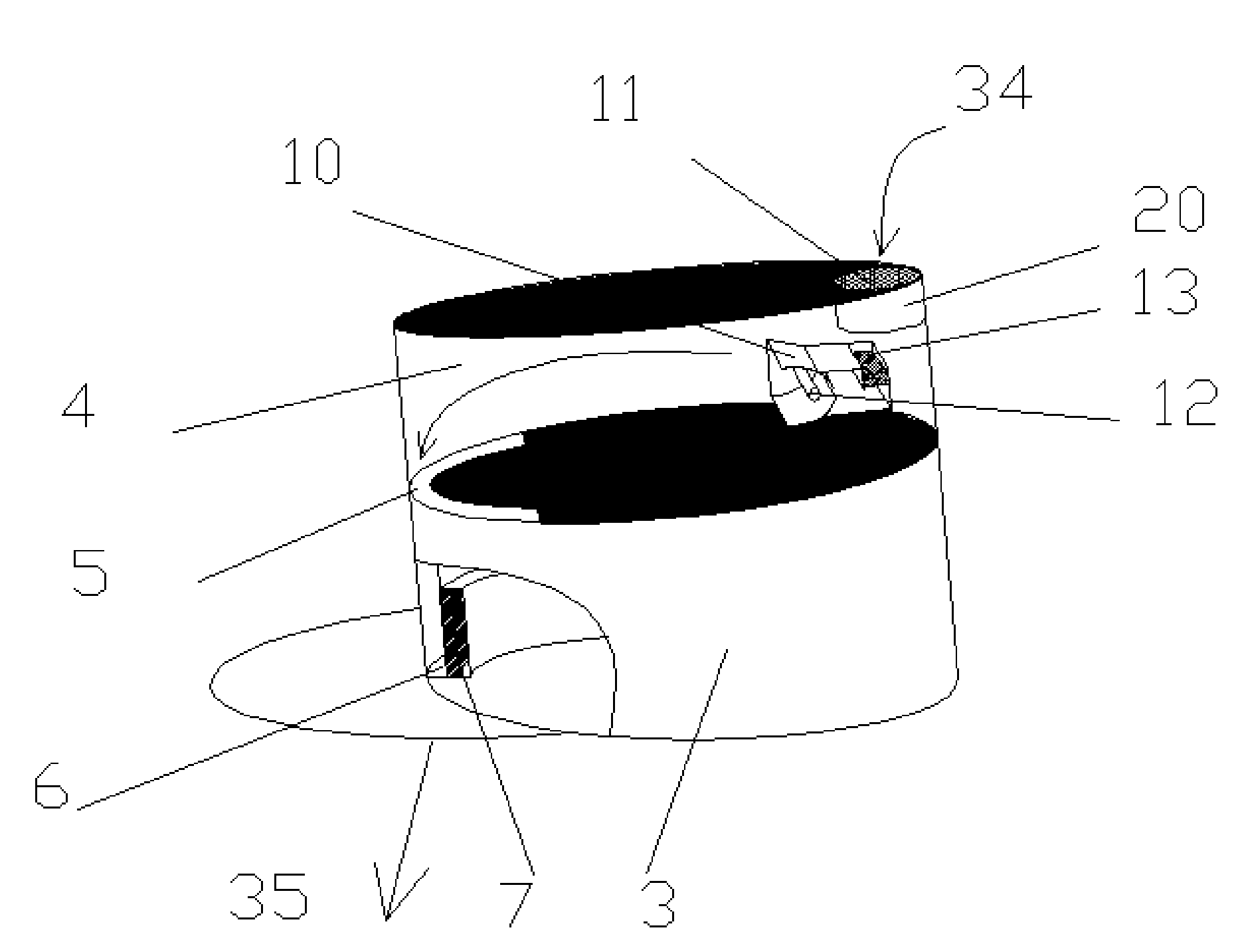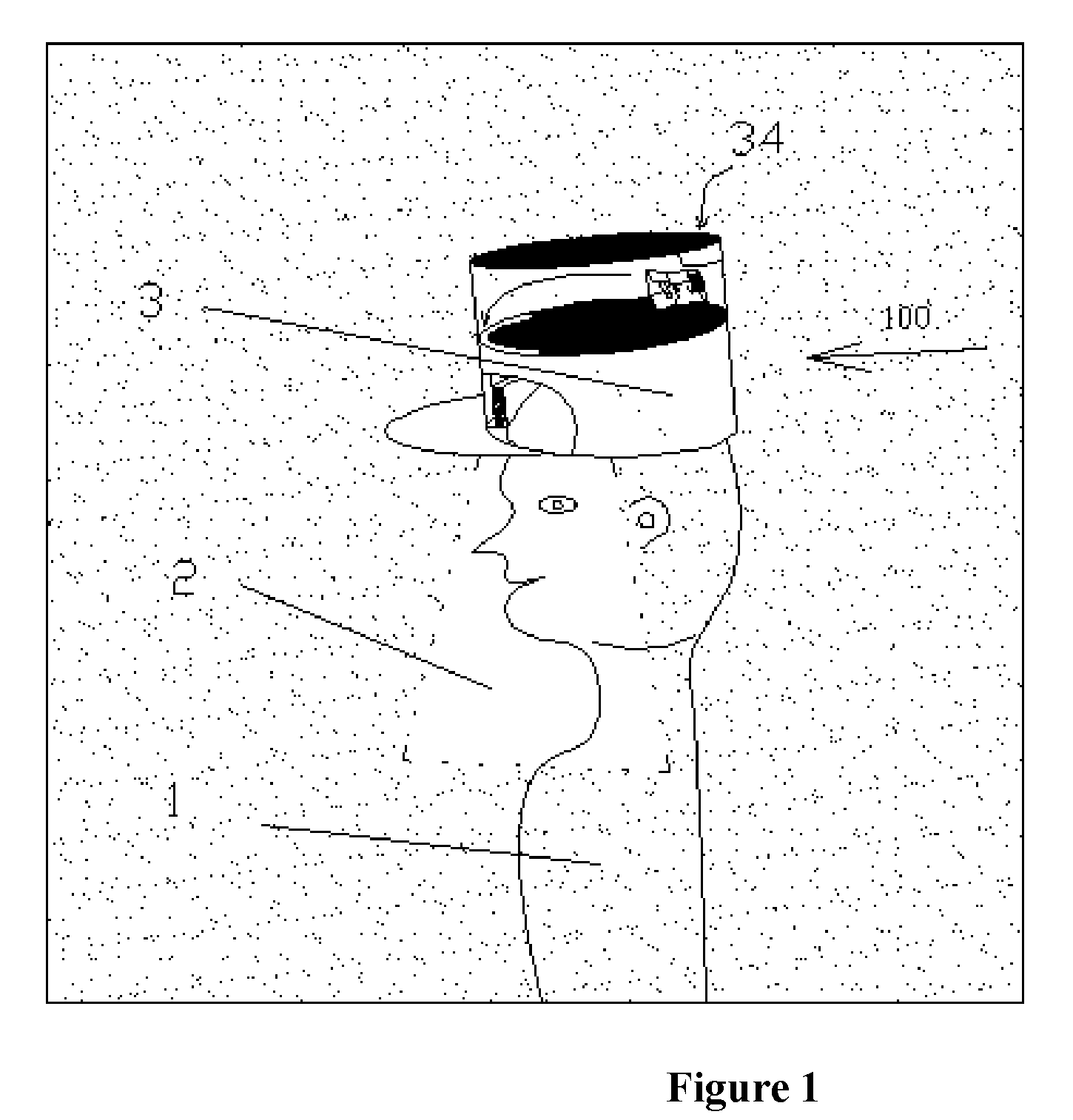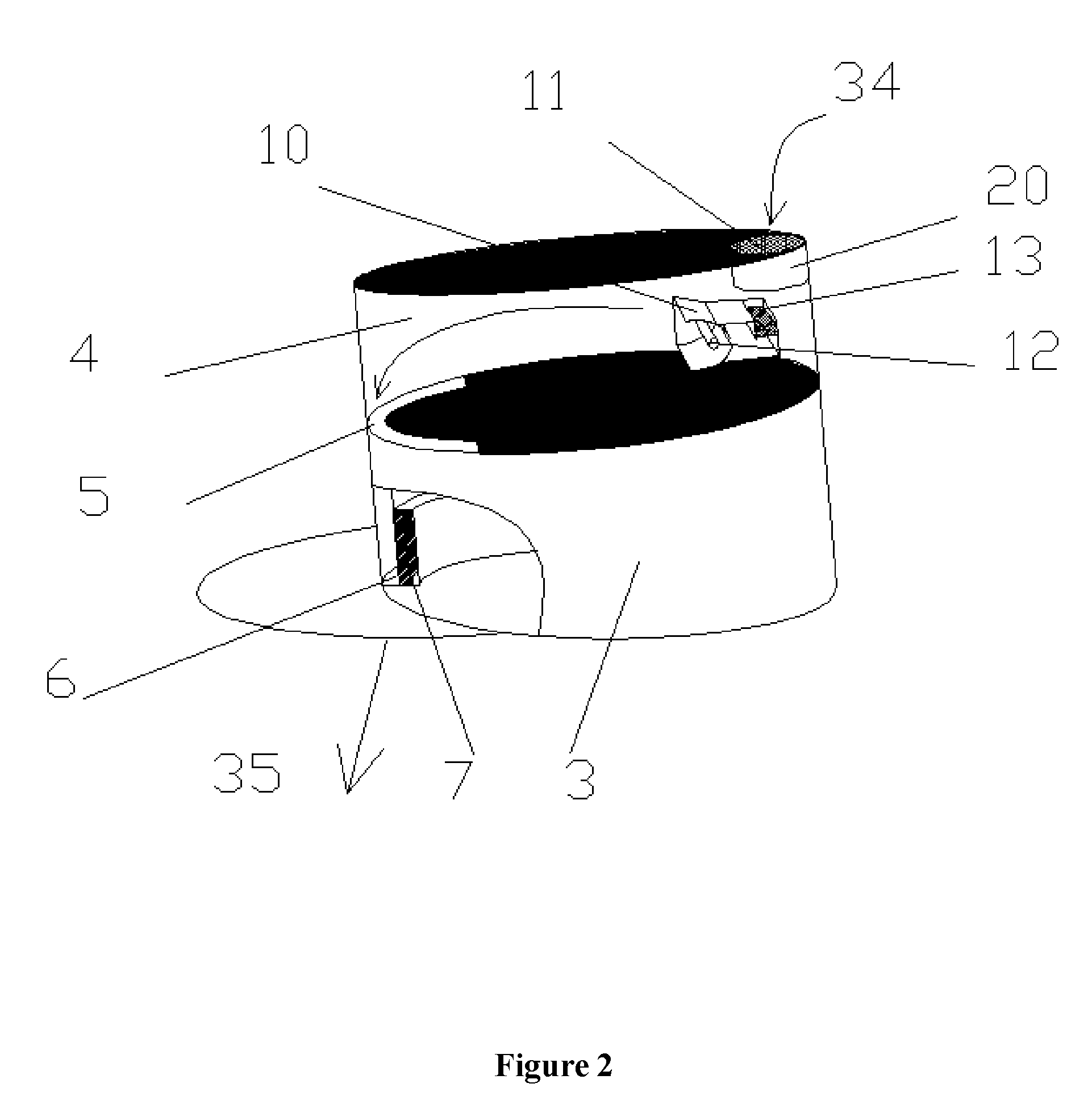Personal respiratory protection system
a respiratory protection and personal technology, applied in the field of personal health protection systems, can solve the problems of insufficient control of serious health care problems, and the inability of known air purification systems to control the spread of airborne microorganisms, and achieve the effect of proper fit and controllable air quality
- Summary
- Abstract
- Description
- Claims
- Application Information
AI Technical Summary
Benefits of technology
Problems solved by technology
Method used
Image
Examples
Embodiment Construction
[0041]The present invention provides a personal respiratory protection system which is worn by a person, generally referred to by reference 100. The preferred embodiment of the invention is shown in FIG. 1, FIG. 2 and FIG. 3.
[0042]The personal respiratory protection system 100 includes the relatively light weight, substantially rigid, headgear construction 3, containing the air disinfection chamber 4. The air disinfection chamber 4 is mounted at the upper part of the headgear construction 3. The air disinfection chamber 4 has the air inlet 11 at one end and the air outlet 5 at the opposite end. The fan 20 is mounted in the headgear construction 3 and connected with the air disinfection chamber 4.
[0043]The ultraviolet air disinfection means includes the ultraviolet lamp 12 and reflector 10. The ultraviolet lamp 12 and reflector 10 are mounted at the air disinfection chamber 4. The ultraviolet lamp 12 is located inside of the cavity of the reflector 10. As shown, the reflector 10 is s...
PUM
 Login to View More
Login to View More Abstract
Description
Claims
Application Information
 Login to View More
Login to View More - R&D
- Intellectual Property
- Life Sciences
- Materials
- Tech Scout
- Unparalleled Data Quality
- Higher Quality Content
- 60% Fewer Hallucinations
Browse by: Latest US Patents, China's latest patents, Technical Efficacy Thesaurus, Application Domain, Technology Topic, Popular Technical Reports.
© 2025 PatSnap. All rights reserved.Legal|Privacy policy|Modern Slavery Act Transparency Statement|Sitemap|About US| Contact US: help@patsnap.com



